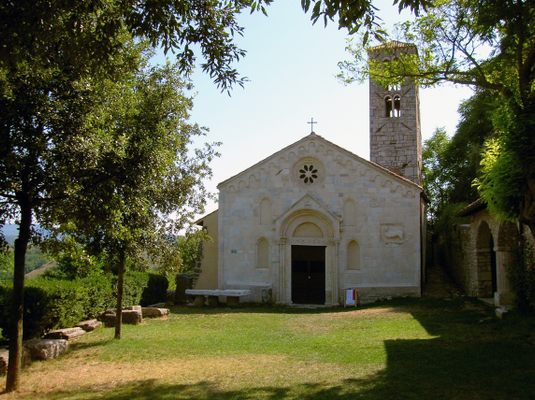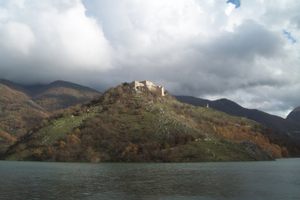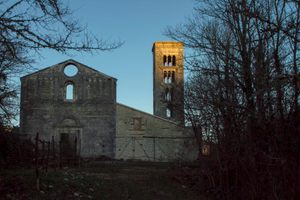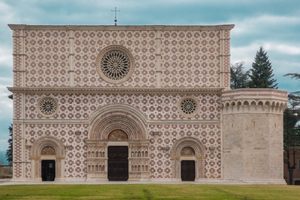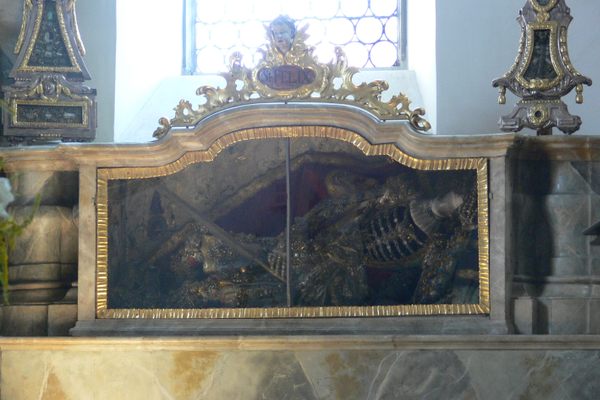About
Hidden among the olive groves and hills of Sabina is the Romanesque church of Santa Vittoria. This medieval structure tells a remarkable tale of religious fervor and piety.
The church, dating in its present state to the late 12th century, was built over a shrine founded around the cult of Saint Victoria, a Christian martyr from the third century. Victoria, who refused to marry a pagan patrician, was exiled to Sabina, where she performed a miracle.
Legend says she chased away a dragon that was threatening the inhabitants of Trebula Mutuesca in return for their conversion. She was then denounced as a Christian to the authorities in Rome and was murdered for refusing to adore an idol of Diana. Local tradition says she was buried in the cave originally occupied by the dragon, which is the present site of the Church of Santa Vittoria.
Traces of an older history are visible on the facade and exterior walls of the building where, among the marble and stone revetments, spolia dating back to Roman times and the earlier Middle Ages are clearly visible. One such feature is a lion and a face that might be that of Helios, the Sun god. Many of these were probably salvaged (or pillaged) from the nearby archaeological site of Trebula Mutuesca, originally a Sabine town conquered by the Romans.
A marble portal, crowned by the figure of the Agnus Dei, leads into the nave of the church. Some frescoes are still visible inside, including a painting of the saint herself. In the 15th century, the Orsini family, the lords of these territories, reconstructed the damaged church.
The church is built over a short section of catacombs, where a sarcophagus is still visible. Deeper below is a network of recently discovered water channels that may suggest the site could have been previously used in pre-Christian times as a sacred spring.
Related Tags
Know Before You Go
As of 2019, due to a recent earthquake, the interior of the church is normally not accessible. However, the courtyard can be accessed.
The church is located on the Saint Francis pilgrimage route. The theater, baths, and Roman ruins of Trebula Mutuesca are five minutes away on foot.
Flavors of Italy: Roman Carbonara, Florentine Steak & Venetian Cocktails
Savor local cuisine across Rome, Florence & Venice.
Book NowPublished
September 19, 2019
